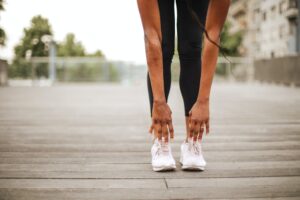How to Perfect Your Hip Hinge
Golfers reach. Waiters bow. Deadlift. Warrior 3. Airplane. Forward fold. Rock backs.
What do all of these activities have in common? They require isolated movement of your hip joint, also known as a hip hinge. Bending from the hips helps you to maintain a neutral position of the spine which is a critical movement for function. As humans, we often need to get close to the floor – for gardening, to pick up laundry, to lift grocery bags, to pick up your children (you get the picture). If your hip doesn’t hinge well in its socket or your hamstrings limit this movement, the next set of joints that have to get you lower are in your lower back. While bending the spine isn’t a dangerous or bad thing, we need stability in the spine when lifting or leaning.
Read More








